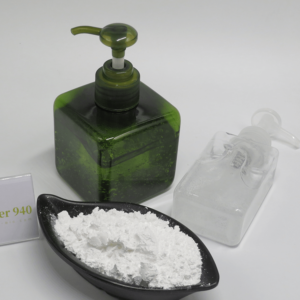With the outbreak of Novel Coronavirus in the world, the market demand for hand sanitizer is increasing. According to the World Health Organization(WHO), washing your hands regularly with alcohol-based hand sanitizers or soap and water can reduce the risk.
For washing-free disinfection products, because it contains alcohol, it needs to be thickened to more than 70% to ensure the stability of the formula system. Carbomer has an excellent thickening effect, is the best choice for an alcohol-containing formula system, and has strong irreplaceability in wash-free disinfection products.
For enterprises that produce hand sanitizer across industries, they will encounter certain problems. Today, the editor will introduce how to make ethanol hand sanitizer gel in the laboratory.

Raw materials: Carbomer 940, ethanol, deionized water, glycerin, triethanolamine.
Operation method:
Step 1: weigh 0.5 g of carbomer 940 and prepare 100ml of deionizing water.
Step 2: 0.5 g Carbomer 940 was added to 100 ml of water in batches. Soak for 8 ~ 10 hours until carbomer is completely dissolved in water.
Step 3: Take a certain amount of triethanolamine and drop it into a carbomer solution. Stir the solution to gel with a glass rod while adjusting the PH value.
Step 4: Take a certain amount of ethanol and glycerol and stir evenly. Carbomer gel was then added to the ethanol solution. The ethanol hand sanitizer gel can be obtained by stirring the solution to a uniform state with a glass rod.
Ps: The above is one way to make a hand sanitizer. The production process can be adjusted according to the formula of hand sanitizer. For example, glycerin is added to the carbomer solution in advance.


 Xi'an Greena Biotech Co.,Ltd. is the specialist in the natural products & chemical manufacturer.
Xi'an Greena Biotech Co.,Ltd. is the specialist in the natural products & chemical manufacturer.
